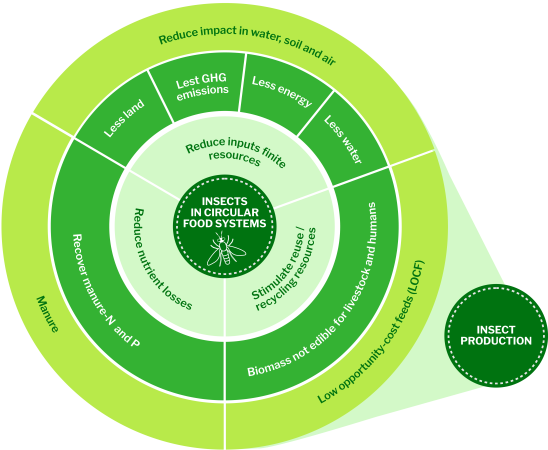
Moving towards circularity in the food system implies searching for practices and technology that minimize the input of finite resources, encourage the use of regenerative ones, prevent leakage of natural resources from the food system, and stimulate reuse/recycling of inevitable resource losses in a way that adds the highest value to the food system. The food system is challenged to provide alternative nutrient sources while reducing the environmental impact on ecosystems and conserving biodiversity, which requires a transition from a current linear food system towards a circular one. Insects can play an important role in this process.
Various Sustainable Development Goals are relevant and directly connected to the use of insects in circular food systems: SDGs 1 (no poverty), 2 (zero hunger), 3 (good health and well-being), 5 (gender equality), and 16 (peace, justice and strong institutions) could be related to the use of insects as feed and food and for smallholder farmers and ex-combatants to improve their livelihood.


Sustainable Development Goals 6 (clean water and sanitation), 9 (industry, innovation and infrastructure), 12 (responsible consumption and production), 13 (climate action), 14 (life below water), and 15 (life on land) could be related to the use of insect waste streams to promote plant health and growth and support of ecosystem services and biodiversity.
